The military’s standard EMBH-105 helmet appeared to show signs of deformation and spalling from pistol fire in a test conducted by a Taiwanese-American YouTuber.
In a video uploaded on Sunday, the YouTube channel “Little Uncle Sam’s Gun and Fun” (山姆小叔Gun&Fun) compares the durability of Taiwanese, US, Chinese and Russian helmets by firing a pistol at each one to compare how well they hold up.
The channel last year uploaded a video that appeared to show that the military’s standard body armor offered insufficient protection against 5.56x45mm rifle cartridges, which sparked an online debate. The Armaments Bureau at the time said the channel had used an inappropriate testing method on the armor.
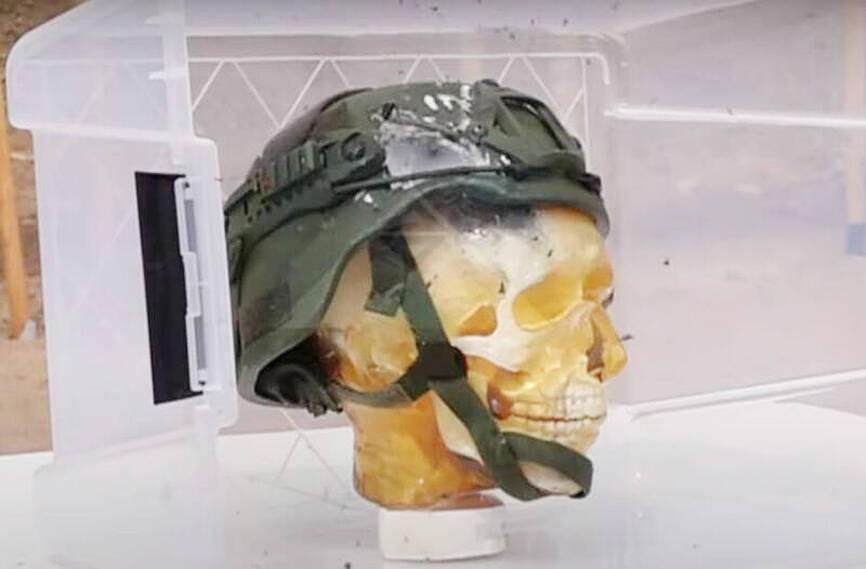
Photo: Still image taken from YouTube channel “Little Uncle Sam’s Gun and Fun”
Last month, the Military of National Defense indicated in a report to the legislature that a new ballistic plate insert for the body armors offering improved protection against modern rifle ammunition would enter mass production next year.
In the channel’s latest video, its crew tested a variety of helmets against 9x19mm Parabellum and 7.62x25mm Tokarev rounds fired at a distance of about 5m.
The 9mm is the world’s most ubiquitous pistol ammunition and the 7.62mm Tokarev is used in Chinese People’s Liberation Army submachine guns.
Some of the Taiwanese helmets were supplied by Democratic Progressive Party New Taipei City Councilor Lin Ping-yu (林秉宥), according to the video.
Although 9mm fire did not penetrate the EMBH-105 helmet, it did exhibit a 27.4mm deep deformation, one of the test’s worst against that caliber.
The Taiwanese helmet sustained severe deformation after being struck by the more powerful 7.62mm Tokarev cartridges, which formed a deep gouge at the point of impact and destroyed much of the helmet’s outer material.
The tests suggest that the Taiwanese helmet offers significantly less protection than the others utilized in the demonstration except the Russian 6B47, which possesses a superior impact-absorbing liner, the video narrator says.
The EMBH-105’s outer layer also produced a significant amount of small fragments that peppered the ballistic gelatin placed under the helmet for the demonstration, suggesting they could have caused small lacerations to the head, the video showed.
The Ministry of National Defense on Monday said that the helmet’s performance was within design parameters and that the Massachusetts Institute of Technology’s ballistic research laboratory had previously conducted tests.
An improved helmet is being developed to enhance protection against concussion and spinal injuries, the ministry said, adding that the project is expected to be completed before the end of this year.
Additional reporting by CNA
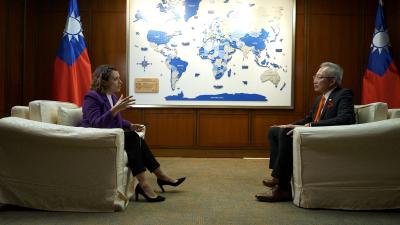
“China is preparing to invade Taiwan,” Deputy Minister of Foreign Affairs Francois Wu (吳志中) said in an exclusive interview with British media channel Sky News for a special report titled, “Is Taiwan ready for a Chinese invasion?” the Ministry of Foreign Affairs said today in a statement. The 25-minute-long special report by Helen Ann-Smith released yesterday saw Sky News travel to Penghu, Taoyuan and Taipei to discuss the possibility of a Chinese invasion and how Taiwan is preparing for an attack. The film observed emergency response drills, interviewed baseball fans at the Taipei Dome on their views of US President
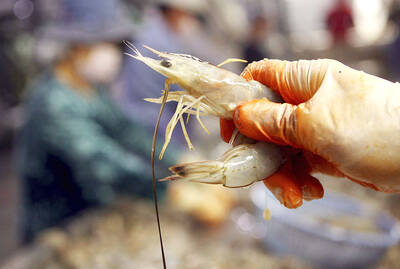
ECONOMIC BENEFITS: The imports from Belize would replace those from Honduras, whose shrimp exports have dropped 67 percent since cutting ties in 2023 Maintaining ties with Taiwan has economic benefits, Ministry of Foreign Affairs officials said yesterday, citing the approval of frozen whiteleg shrimp imports from Belize by the Food and Drug Administration (FDA) as an example. The FDA on Wednesday approved the tariff-free imports from Belize after the whiteleg shrimp passed the Systematic Inspection of Imported Food, which would continue to boost mutual trade, the ministry said. Taiwan’s annual consumption of whiteleg shrimps stands at 30,000 tonnes, far exceeding domestic production, the ministry said. Taiwan used to fill the gap by importing shrimps from Honduras, but purchases slumped after Tegucigalpa severed diplomatic ties with Taiwan
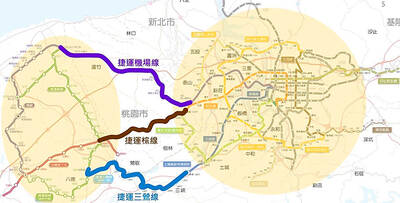
The Executive Yuan yesterday approved a southwestern extension of the Sanying MRT Line from New Taipei to Bade District (八德) in Taoyuan, with a goal of starting construction by late 2026. The 4.03-kilometer extension, featuring three new stations, will run from the current terminus at Yingtao Fude Station (LB12) in New Taipei City to Dannan Station (LB14), where it will connect with Taoyuan’s Green Line, New Taipei City Metro Corp said in a statement. This extension will follow the completion of core Sanying Line, a 14.29-kilometer medium-capacity system linking Tucheng (土城), Sansia (三峽)
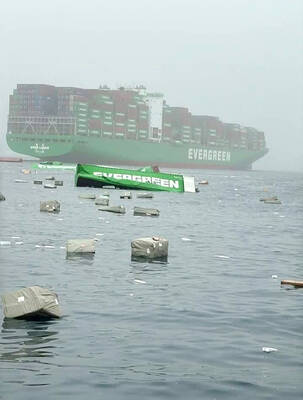
CARGO LOSS: About 50 containers at the stern of the ‘Ever Lunar’ cargo ship went overboard, prompting the temporary closure of the port and disrupting operations Evergreen Marine Corp, Taiwan’s largest container shipper, yesterday said that all crew members aboard the Ever Lunar (長月) were safe after dozens of containers fell overboard off the coast of Peru the previous day. The incident occurred at 9:40am on Friday as the Ever Lunar was anchored and waiting to enter the Port of Callao when it suddenly experienced severe rolling, Evergreen said in a statement. The rolling, which caused the containers to fall, might have been caused by factors including a tsunami triggered by an earthquake in Russia, poor winter sea conditions in South America or a sudden influx of waves,